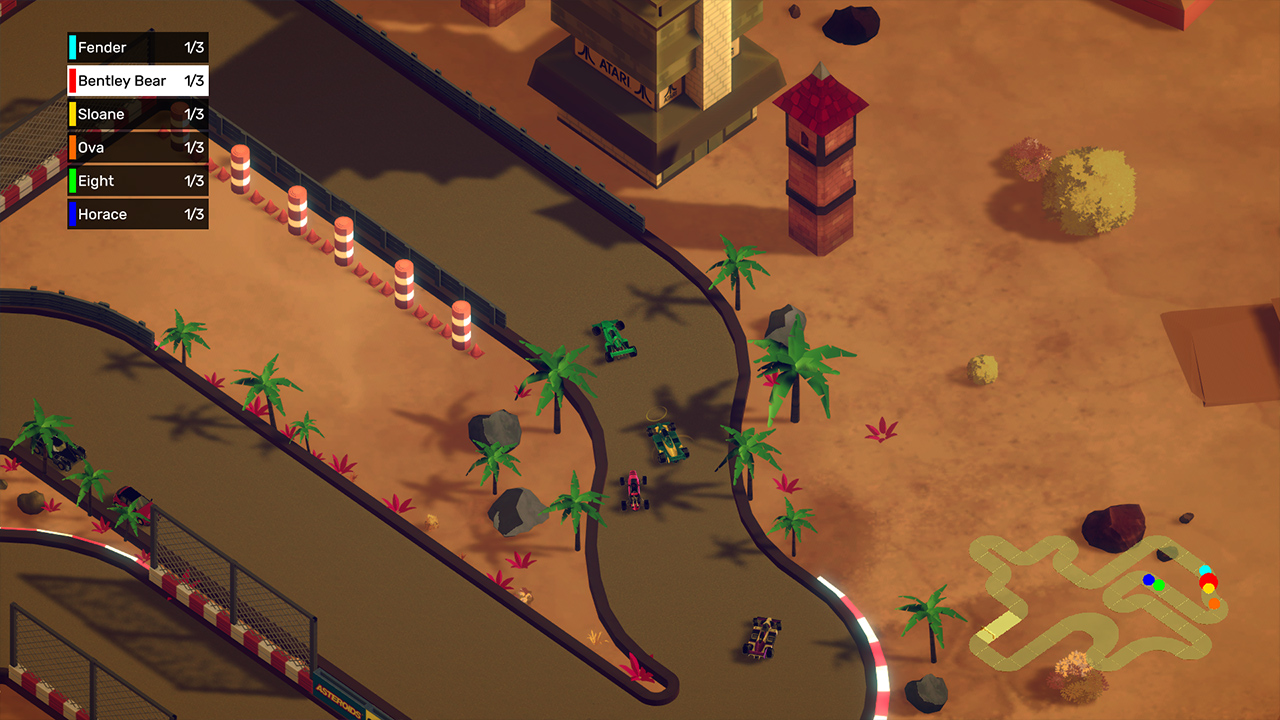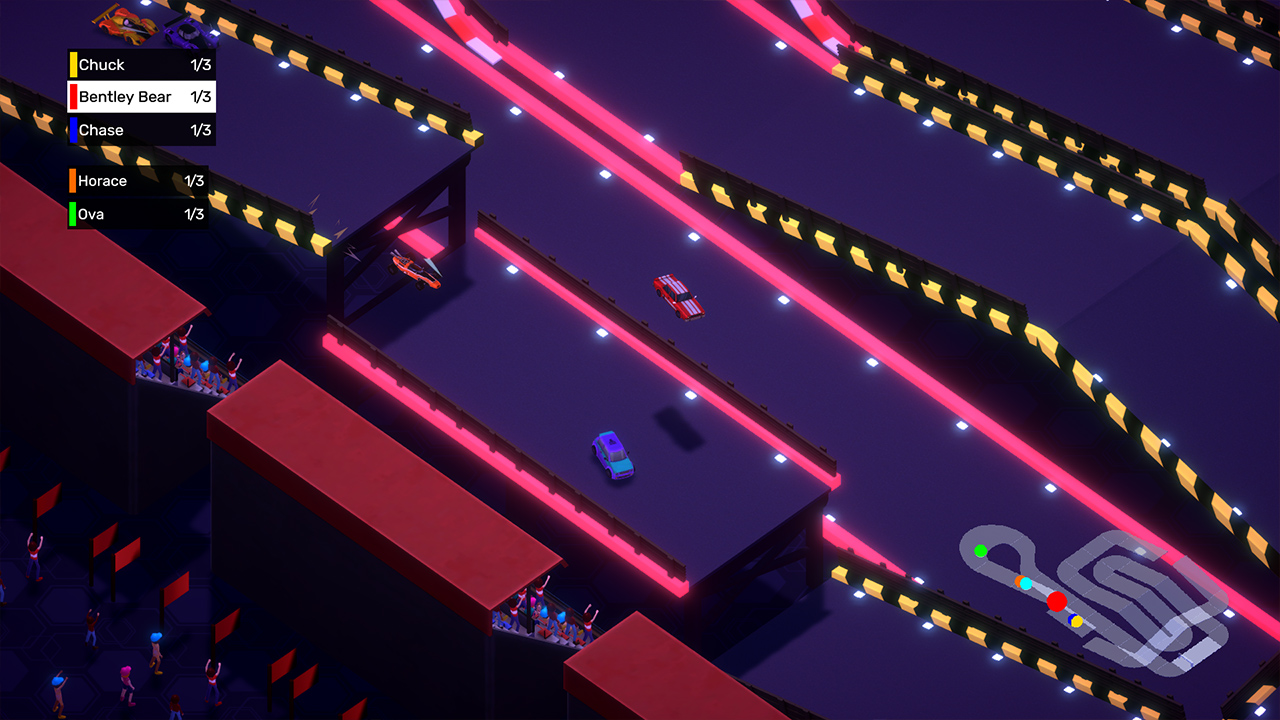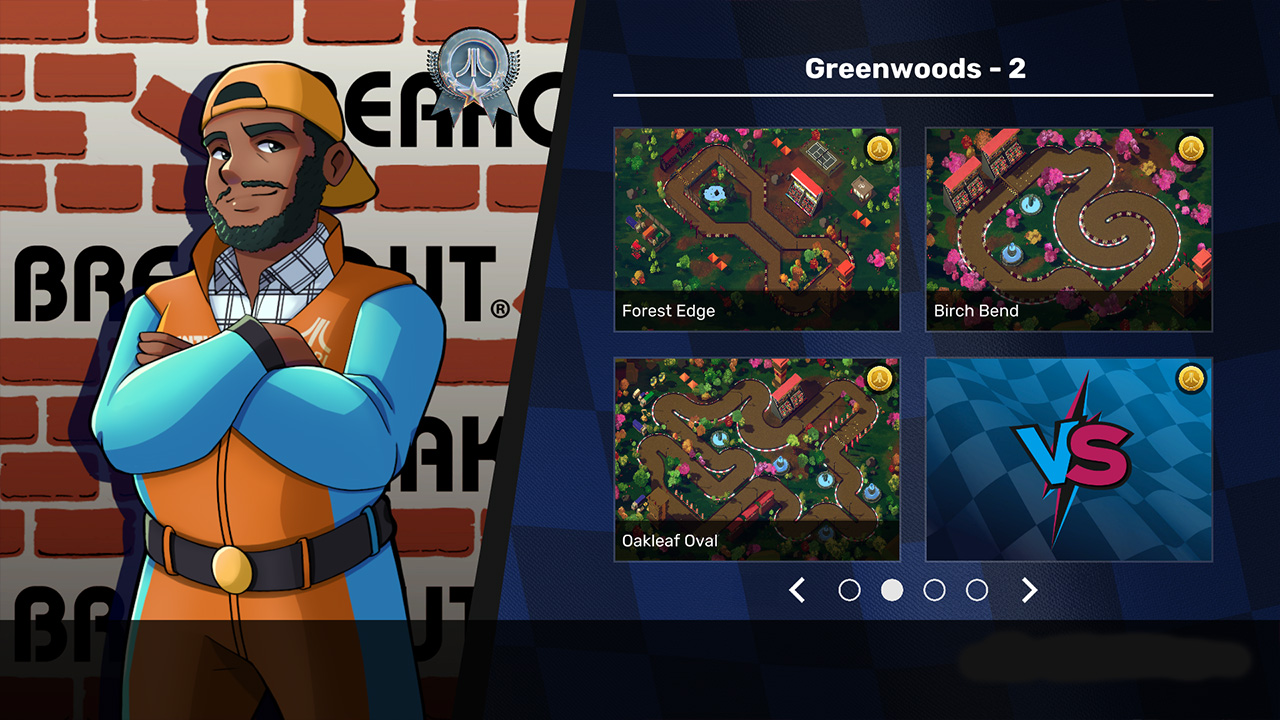A sprint with forced pacing.
I was more into Atari’s NeoSprint for Nintendo Switch at the beginning of the review period than at the end of it, and that feels appropriate. This is a remake of an arcade game from 1976, and that’s how I felt about nearly every arcade game in the ’70s and ’80s.
Games back then couldn’t hold your attention for long if you weren’t setting out to master them, and who mastered racing games? Rather, Sprint’s attraction was that you could play it with others—there were 1-, 2-, 3-, 4- and even 8-player versions in arcades. Is this the first 8-player video game based on an actual 8-player arcade game? I can’t think of any others.
Despite nearly 50 years of separation, the gameplay in NeoSprint is largely the same. You’ve got a top-down, somewhat isometric view of the race track and a fairly basic control scheme: accelerate, brake, and handbrake for tighter turns. The brake becomes reverse if you hold it down, although it’s often easier to just reset your car with X (with a forced delay) than to reverse yourself back onto the race.
The controls and gameplay give NeoSprint a loose, RC feel. Physics are inaccurate, but consistent. Cars don’t hug the tracks, it feels more like they skid across and bounce over it. They’re easily jammed into walls and other vehicles. Climb a ramp too quickly and you could bounce right off the track on your landing. As such, selecting the right car of the nine available is key. Do you prefer to separate from the pack via quick acceleration or mastery of the turns? Is it better to choose a cart that accentuates your arcade racing strengths or that compensates for your weaknesses?
You’ll have time to figure this out, as NeoSprint locks the majority of its content behind the single-player campaign mode. When I first loaded the game to race with my son, we were surprised to find only one grand prix set of four tracks available. That’s less than 1/10th of its full content. As such, I had to push my way through the campaign mode in order to make it interesting for others, as the really fun tracks are buried deep in the game.
Granted, all this practice made me a better racer, so I won a lot.
The campaign introduces some characters to beat, but there’s no real story. That’s good, because this game doesn’t need one. This is arcade racing, after all, and arcade games were designed to get you on and off quickly. To that end, there’s a free-race mode that approximates dropping in a quarter and hitting the start button. If you want more depth, NeoSprint also offers time trials to improve your skills, the aforementioned grand-prix circuits, and an obstacle course mode that keeps things interesting after you’ve mastered the standard tracks. Again, though, tracks have to be unlocked in campaign mode before you’re able to access them in the other modes.
That restriction even carries over to the track builder. Players have the ability to create their own tracks and share them online, but many of the building items are also locked behind campaign mode progress. Maybe that makes sense—the more exposure you have to the variety of default courses, the better your inspiration and your ability to create playable tracks.
Considering multiplayer is where the fun is, I’m confused by why Atari doesn’t allow multiplayer racing to unlock all of this content. To me, this is a bigger oversight than the lack of online multiplayer. I recognize not everyone has a group of fellow racers ready to share the couch and Joy-Cons, but forcing players to race shoulder-to-shoulder is in spirit with the original arcade game.
Graphics and audio? They’re decent enough. It is rather easy to lose sight of your car on the track, but NeoSprint’s visual updates otherwise serve to keep you focused on the track. I think it would’ve been fun, however, for Atari to throw in the game’s original tracks with the original graphics (complete with oil slicks that have the word “OIL” helpfully written in them).
NeoSprint is a decent arcade racer, and I think this is one of Atari’s bolder decisions when considering remakes. I don’t agree with some of the choices they made regarding accessibility, but that doesn’t make the game less fun to play. It just means you have to play it more in order to make it as fun as it can be.
Review: NeoSprint (Nintendo Switch)
Fair
NeoSprint updates the ’70s arcade racer with the modern features you’d expect from Atari: multiple racing modes, numerous tracks, a track builder, etc. Unfortunately, it locks most of the content behind the single-player campaign mode, and it doesn’t include online multiplayer. The fun is there, you just have to work to get to it.






